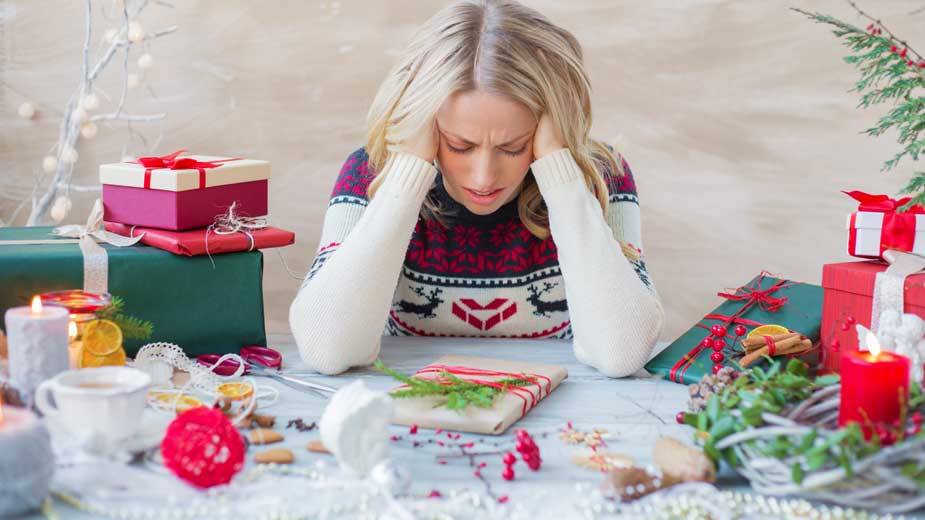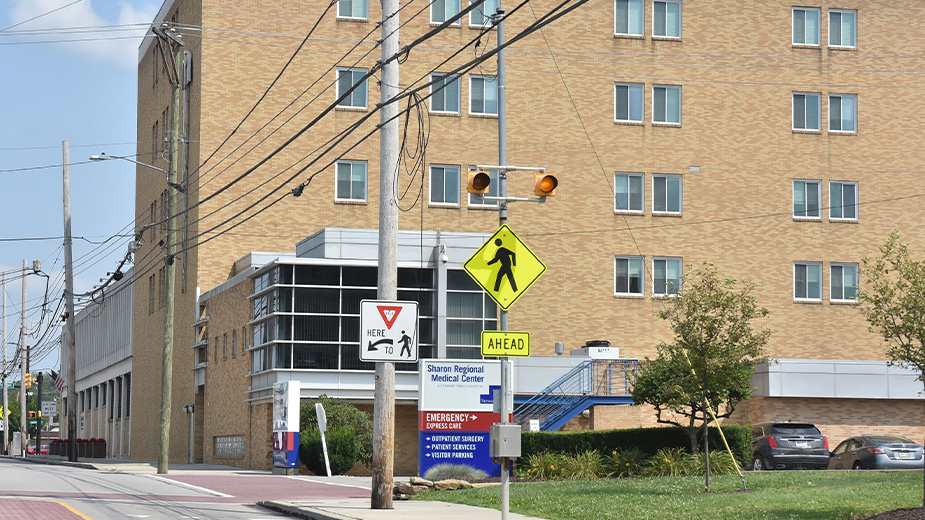As Holidays Alter, Accelerate Activity, More Stress Results
YOUNGSTOWN, Ohio — The late singer Andy Williams calls it the “most wonderful time of the year,” but for those with mental health problems, the holidays can bring extra stressors that may worsen anxiety or depression.
“A lot of times, it’s a mixed bag for people. They’re more sensitized to emotions this time of year and sometimes they’re painful ones,” says Dr. Lewis Spirtos, a psychiatrist with Mercy Health. “With temperature changes and days getting shorter, it takes some adjusting to get used to. That’s coupled with the stress of the holidays and the fact it tends to be a busy time of year.”
Spirtos sees an increase in mental-health treatment this time of year, adding that it’s an increase across all age groups, “though maybe a little less in younger adults.” Although the mental health issues that arise may be the same – he says depression and anxiety are the most common – the source can be different for seniors and for teenagers and young adults.
As a social worker with Catholic Charities, Carol Brenner says this year, about a week before Thanksgiving, she began seeing a shift in her clients. Especially for those who live alone, it’s easy for them to become more withdrawn. She encouraged them to get out and participate in programs such as the Mahoning County Sheriff Department’s annual Thanksgiving dinner.
“They’re sitting by themselves. They’re cheerful when they heard about it. They got pie or a turkey dinner and that brings back memories,” she says. “We talked to them about their losses and their new normal since they lost someone. They still feel that loss today, especially around the holidays.”
For children, says Dr. Steven Jewell, the highlight reel of posts on social media can make it tough for them and young adults.
“This is an era of people comparing themselves to other people on social media on an ongoing basis. You’re watching your friends and seeing what they post,” says the director of psychiatry and psychology for Akron Children’s Hospital. “You ask, ‘Do I have what they have? Am I as handsome as they are? Do I have the things they have?’ That whole comparative process that happens every day of the year gets amplified during the holidays.”
The most common issues he sees are anxiety and depression. Symptoms can be triggered by the stresses of the season, Jewell says.
“The general premise is if you take any one of us and put us under enough stress, we’re going to get sick. It’s how we function,” he says. “Some people get gastrointestinal symptoms but others, if there’s a history of mental illness, will respond with that. While anxiety and depression are the most common ones, any pre-existing mental illness can be triggered by stress.”
But stressors aren’t always negative. In its most basic form, stress is simply change, Jewell continues. The American Institute of Stress uses the Holmes-Rahe Stress Inventory to help project the impact of stress on health. At the top are events such as the death of a spouse or divorce, Nos. 1 and 2 respectively. But also catalogued are items like marriage, the birth of a child, job promotions and vacations.
“Stress is a significant change in your environment, whether it’s a change for the better or for the worse. Change is stressful,” he says, and the flurry of activity between mid-November and the end of the year tends to feature lots of deviations from normal activity.
In addition to parties or family dinners, there’s also a larger societal pressure at this time of year, adds Carmella Hill, director of behavioral health for Coleman Professional Services. There’s an expectation from all angles that this is the time of year to be joyous, she says, which can push those who aren’t joyous to put on a mask.
“They really aren’t sure what to do and seek help. They may increase their counseling or want to have their meds increased or added because of that pressure they feel,” she says.
Adds Spirtos, “If people don’t feel [joyous], it adds to their despair and they start to question, ‘What’s wrong with me?’ and they spend more time in their head.”
While there’s no clinical definition for what’s widely known as seasonal-affective disorder, the basis for it is rooted in fact.
The medical diagnosis, Jewell and Spirtos say, is major depression with a seasonal pattern; that is, depression occurring during the same period of the year in at least two consecutive years.
“It’s more of a pop-culture term that sometimes gets misused. Just like regular depression or one with a seasonal pattern, the treatment is really the same and the symptoms are the same,” Spirtos says. “For seasonal diagnoses, you can look at things like light therapy as opposed to medication. It’s a personal preference.”
During the winter, part of the cause can be limited exposure to sunlight, the result of shorter days. Light therapy counteracts that as patients awake before the sun rises to sit with lights emitting the same wavelengths as natural sunlight.
Another importance of maintaining mental health during the holidays and throughout the winter is self-care, Brenner and Hill say. The tenets are similar to what should be done throughout the year, they say, but the actions carry some extra weight this time of year.
“The holidays are naturally stressful or increasing anxiety, because of all the hustle and bustle,” Coleman’s Hill says. “People should have the perspective of, ‘Let me get a jump on this. Let me get ahead of it so it doesn’t increase my anxiety.’ ”
The simplest forms of self-care can be something such as watching movies, going for walks or attending community events, Hill says. But, Brenner adds, it’s important to not let it slip into isolation, especially for seniors.
“There’s so much going on that if you don’t want to do something, that’s OK. I encourage them to do something. Maybe it’s the same thing you always do; maybe it’s working with charities,” she says. “What I don’t want is people to isolate themselves.”
Part of self-care is setting limits. It’s possible for the deluge of party invitations, work responsibilities and family commitments to become overwhelming and result in anxiety or depression.
“You can take out the feeling measure of it and go with something concrete: time and date. You may have five invitations for a Saturday and you can’t get to all of them,” Hill says. “If you can express that, people receive that well and they’re clear about it. Sometimes people aren’t clear about why they’re doing what they’re doing. It might relieve some of that pressure.”
Copyright 2024 The Business Journal, Youngstown, Ohio.



